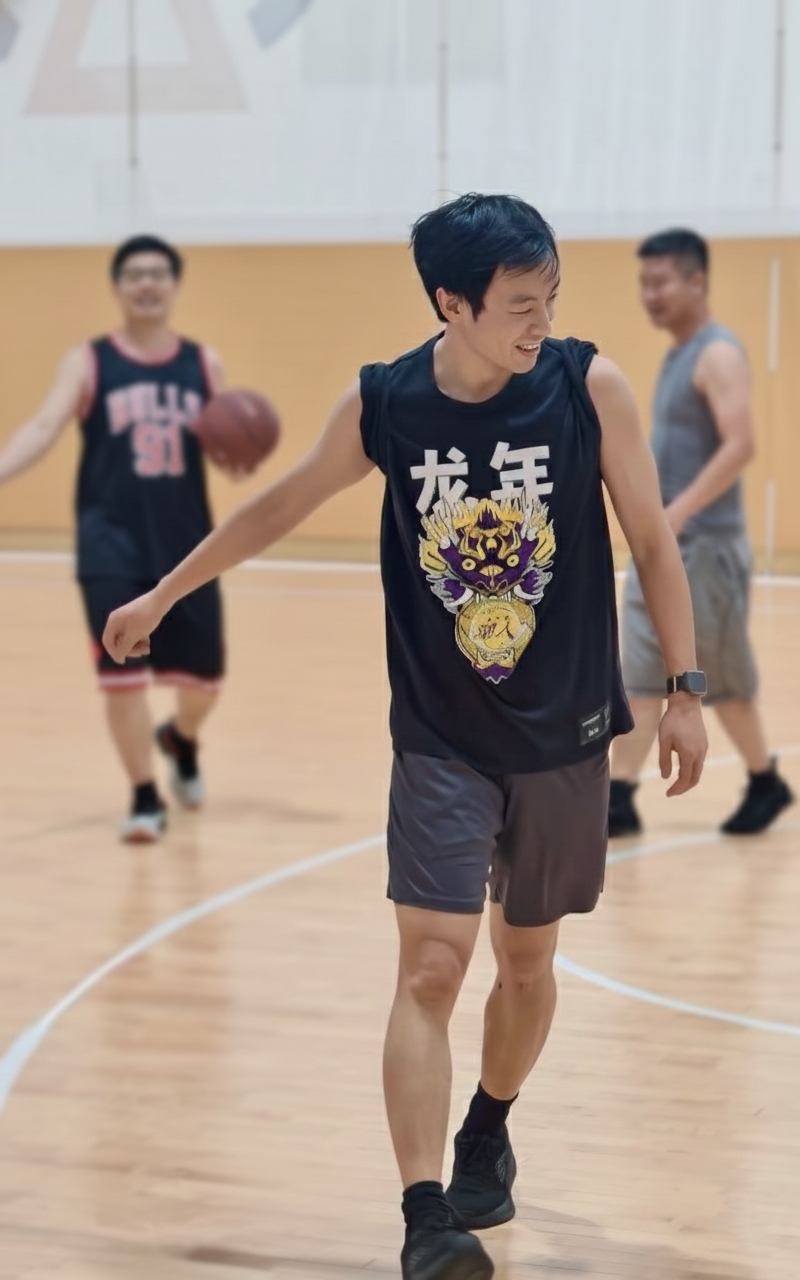Welcome to XFAN lab at HKUST(GZ)
What's popping? ... 最近忙啥呢
Bio-inspired flapping wing aerial vehicles imitate the flight of birds or insects by generating lift and thrust through periodic wing flapping. Compared with fixed-wing or rotary-wing aircraft, they are lightweight, low-noise, highly maneuverable, and capable of dynamic wing deformation, enabling agile flight in complex environments. Beyond conventional tasks such as transport and inspection, they also hold potential for applications like agricultural pollination and even visually engaging aerial competitive sports in three-dimensional airspace, which could drive major technological and industrial advances. Of course, bio-inspiration should extend beyond merely mimicking animals; it should focus on drawing deeper insights from biological principles and applying these first principles to the design, sensing, and control of robotic systems. In collaboration with Yisong Yue’s Group[https://www.yisongyue.com/] from Caltech, our most recent preprint, A Narwhal-Inspired Sensing-to-Control Framework for Small Fixed-Wing Aircraft (arXiv:2510.07160), presents a sensing-to-control pipeline that leverages bio-inspired hardware and learning-based dynamics models to enhance agility and robustness in small fixed-wing aircraft. This framework illustrates how nature’s strategies can inform holistic robotic design and control, rather than superficial imitation.
仿生飞行器是一种模仿鸟类或昆虫等生物飞行方式的飞行装置,其核心在于通过机翼的周期性上下拍动来产生升力和推力,从而实现飞行。 这种飞行方式与传统固定翼或旋翼飞行器相比,具有体积小、重量轻、隐蔽性好、机动性强、能耗低等优点。与传统固定翼飞行器或旋翼飞行器相比,仿生扑翼飞行器能够动态变形翅膀,进而实现急转、悬停等复杂动作,在复杂地形上拥有更高机动性(如丛林/城市等);且其在飞行过程中所产生的噪音小于传统固定翼或旋翼飞行器,在隐蔽性上有更为优异的表现,因此在未来拥有更加广泛的应用场景。或凭借质量轻与灵活的优势,参与农业授粉,降低物种灭绝的风险与影响。除运载、巡检、测绘等“刚需”场景外,我们或许可以提出一个更具大众影响力与产业带动性的方向:可观赏性的空中竞技体育。设想“三维篮球/足球”等国际赛事——在三维空域内布设立体球门/篮筐,各国国家队以低噪安全飞行器开展攻防对抗。 该方向对安全、低噪、抗风与对抗控制提出更高标准,反过来将显著拉动核心技术的突破与产业化。 当然,生物启发不应仅限于简单模仿动物,而应着眼于从生物系统中提取更深层次的原理,并将这些基本原理应用于机器人设计、感知与控制。在与加州理工学院的Yisong Yue教授[https://www.yisongyue.com/] 合作中,我们最近的预印本 《受独角鲸启发的小型固定翼飞机感知-控制框架》(arXiv:2510.07160)提出了一个结合生物启发硬件与基于学习的动力学模型的端到端感知-控制流程,以提升小型固定翼飞机在低速条件下的机动性与鲁棒性。该框架展示了如何借鉴自然策略来指导机器人整体设计与控制,而不只是表面模仿。
更多详细的图文中文介绍,请参见港科大(广州校区)可持续发展与环境学域的黎禹昕老师制作的精美科普文章《人类飞行简史》
My friend, have you ever wondered why ... 朋友,你是否有很多问号
The Wright brothers dawned the aviation age from keen observation of bird flight. Now in 2026, five decades after the moon landing, with interplanetary travel on the horizon, there is still no aerial robots that remotely compete with birds or bats. The irony of rocket science outpacing the seemingly simpler science of animal flight casts an unsatisfying shadow over the progress we have made. The reality is that birds and bats have deceived us all by their effortless grace, as bio-inspired mimicry and mechanics are highly interdisciplinary and challenging studies. It demands a fundamental understanding of unsteady aerodynamics, robust robotic design and flight control, and the appreciation towards reduced-order modeling for nonlinear dynamics, which lends itself to data-driven approaches. To make matter more complicated, all these efforts are deeply coupled, and need to weave together to create faithful bio-inspired, autonomous robots.
你是否曾经思考过这个问题:一百多年前,莱特兄弟正是通过对鸟类飞行的观察,才开启了人类的航空时代。然而今天已是2026年–我们已然处在登月的半个世纪之后,连星际探索都已隐隐绰绰地在地平线浮现–但环绕在我们身边的小型无人机,却仍然以旋翼机居多,其次是固定翼飞行器,而未曾见到能直接在商场里买到就能爽飞的仿生扑翼飞行器。英语里,有一个词叫,火箭科学(Rocket Science),常被人用来比喻艰难晦涩的学科,对于火箭的认识却是获得突飞猛进,反而超越了看似简单的仿生飞行空气动力学的发展,常常让人不禁好奇个中缘由。其实,鸟类和蝙蝠以那种不费吹灰之力的优雅飞行姿态,欺骗了我们所有人。针对仿生飞行动力学的研究看似直观,实则是一门高度交叉的学科:它要求我们深入理解非定常空气动力学(Unsteady aerodynamics),具备对机器人硬件设计的经验并掌握飞行器控制原理(Flight Mechanics),并能抽丝剥茧,通过降阶建模(Reduced-order modeling),抓住其中非线性动力学的本质;在如今人工智能的背景下,数据驱动方法(Data-driven approaches)也开始登上舞台,发挥重要作用。更为棘手的是,这些环节并非彼此独立,而是紧密耦合、相互交织,而唯有将它们融会贯通,才能真正创造出真正能与旋翼机竞争的仿生飞行机器人。
Bio-inspired jet propulsion
Wing articulation is critical for efficient flight of bird- and bat-sized animals. Inspired by the flight of Cynopterus brachyotis, the lesser short-nosed fruit bat, we built a three-degree-of-freedom flapping wing platform with variable wing folding and twisting capability. In late upstroke, the wings ”clap” and produce an air jet that significantly increases lift production, with a positive peak matched to that produced in downstroke. We used multiple approaches – quasi-steady modeling, direct force/power measurement, and PIV experiments in a wind tunnel – to understand critical aspects of lift/power variation in relation to wing folding magnitude over Strouhal numbers between 𝑆𝑡 = 0.2 − 0.4. While lift increases monotonically with folding amplitude in that range, power economy (ratio of lift/power) is more nuanced. At 𝑆𝑡 = 0.2 − 0.3, it increase with wing folding amplitude monotonically. At 𝑆𝑡 = 0.3 − 0.4, it features two maxima – one at medium folding amplitude (∼ 30◦), and the other at maximum folding. These findings illuminate two strategies available to flapping wing animals and robots – symmetry-breaking lift augmentation and appendage-based jet propulsion. (This work is published on 2025 by Journal of Royal Society Interface, full paper available in Publications section)
Video available on: YouTube | Bilibili
Subsequently, we found this jet can be directed by controlling the wing twist at the moment of clapping, which leads to greatly enhanced cycle-averaged thrust, especially at high 𝑆𝑡 or low flight speeds. Additional benefits of more thrust and less negative lift are gained during upstroke using wing twist. Remarkably, less total actuating force, or less total power, is required during upstroke with wing twist. These findings emphasize the benefits of critical wing articulation for the future flapping wing/fin robots and for an accurate test platform to study natural flapping wing flight or underwater vehicles. (This work is presented at IROS 2024. Full paper available in Publications section)
Video available on: YouTube | Bilibili
Flapping wing robot Kestrel
The plan of the ornithopter, called kestrel, was first patented by an American inventor called Andrew Kinkade, in the 2001. I built it as a hobby. It weighs around 430 grams, and mounts a BLDC motor that drives the wing flapping up and down via a four-bar linkage mechanism. There are two servos that controls the tail to pitch and roll
This video was taken on August, 25th, 2018, in front of a lawn of the stadium in Sichuan University, China In this video, right after launching, Kestrel started to descend, then I immediately increased the throttle, which effectively increased the flapping frequency. It started to ascend, albeit slowly.
Then, I steered it to the right by controling the tail surface to roll to right. Towards the end of the video, the carbon rod snapped from the shoulder joint, potentially due to siginificant shear force at the base of the wing root.
Video available on: YouTube | Bilibili
Computational fluid dynamics on flapping flight
The kinematics of hipposiderid bats (Hipposideros pratti) in straight and level flight has been deconstructed into a series of modes using proper orthogonal decomposition, to determine the relative importance of each mode in the overall force dynamics. Papers available in Publications Section
Collaborate or simply wanna know more? ... 有事没事儿,发个邮件唠唠!
在港科大广州校区,我的实验室XFAN希望通过对基础飞行动力学的研究,来突破仿生飞行器发展的瓶颈。方向包括:1)仿生飞行器的非定常空气动力学机理探究;2)数据驱动的高保真降阶动力学模型;3)强阵风的感知及飞行控制算法。 我的团队从大自然中汲取灵感,但并不满足于简单的模仿。联系我的邮箱是:xiaozhoufan@hkust-gz.edu.cn
At the Hong Kong University of Science and Technology (Guangzhou), the XFAN Lab aims to overcome key bottlenecks in the development of bio-inspired aerial vehicles through fundamental research in flight dynamics. Our research focuses on:
Investigating the unsteady aerodynamic mechanisms of bio-inspired flying vehicles; Developing data-driven, high-fidelity reduced-order dynamic models; Designing sensing and flight control algorithms for operation in strong gust environments.
Inspired by nature, our team goes beyond mere imitation, striving instead to uncover the underlying physical principles and translate them into generalizable and engineering-ready flight theories and technologies. For inquiries or collaboration, please contact: xiaozhoufan@hkust-gz.edu.cn
